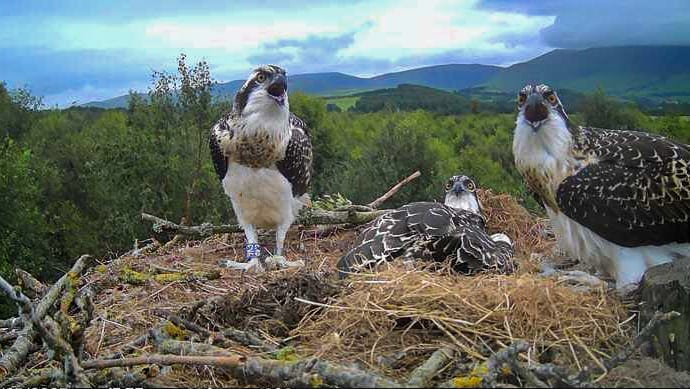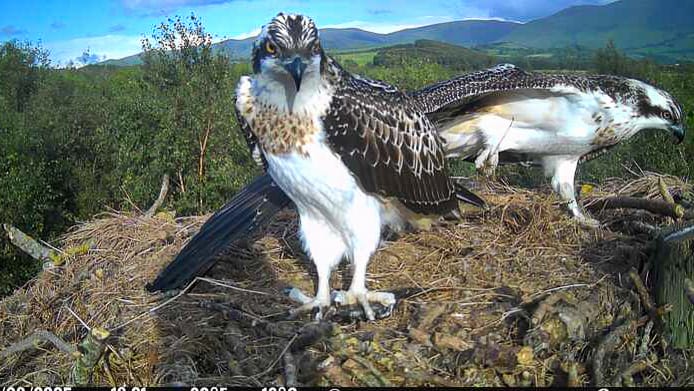Success at latest Lake District osprey nest
Success at latest Lake District osprey nest
Three young ospreys have successfully fledged from a nest in North West Cumbria, marking the first breeding success at the site after 12 years of monitoring by Forestry England.
The milestone represents a significant conservation win for one of Britain's rarest birds of prey. The breeding pair - a male hatched at Forestry England Kielder and female from Scotland - have now begun their first migration to West Africa for the winter, a 3,000 mile journey south.
Two of the three chicks have been fitted with British Trust for Ornithology (BTO) identification rings to help track their progress. Camera monitoring between ringing and fledging has provided valuable insights into their behaviour and development, with the chicks developing well through the Lake District summer.
Nathan Fox, Recreation Ranger (North and West Cumbria) at Forestry England said:
“It’s fantastic to see another breeding osprey pair here in the Lake District, as species numbers increase the number of nest sites also grows and we’ve been monitoring this nesting pole for 10 years in the hope it would attract a pair. We believe these are first-time breeders so it’s fantastic to seem them successfully hatch, rear and fledge three healthy chicks, who in due course, will hopefully return to mate and breed themselves.
The success builds on Forestry England and the Lake District Osprey Project's achievements near Bassenthwaite Lake, where the birds first returned to breed in the area in 2001, and Kielder Forest, which celebrated its 100th successfully fledged chick in 2022.
The final chick began its journey south on 16 September, following its siblings and the rest of the UK’s osprey population to warmer climates, hopefully returning in two to three years to find a nest and breed.
Ospreys were driven to extinction in England and Scotland during the 20th century but have been slowly recovering thanks to conservation programmes. The species faces ongoing challenges from habitat loss and climate change, making each successful breeding season crucial for population recovery. The North West Cumbria nest, alongside the work of organisations such as Forestry England in Kielder, demonstrates how targeted conservation work can help restore wildlife populations.


